

Legendary photographer Wu Yinxian (1900-94) is noted for capturing many images of Yan’an, the cradle of communist revolution, from the 1930s to 1940s. The photos are of great historical significance as they reflect the political, military, economic and daily life of CPC members, especially the leadersincluding Mao Zedong and Zhou Enlai.
A retrospective now at the Beijing’s National Art Museum of China (NAMOC) reviews Wu’s lifetime dedication to photography, tracing it back to his purchase of a second-hand Brownie Junior camera in the 1920s.
The exhibition displays about 230 photos and documents, half of which were recently donated to the NAMOC by Wu’s offspring.
Wu cultivated his interest in photography when studying oil painting at the Shanghai Fine Art School established by artist Liu Haisu. Later when he taught at a primary school, he kept taking photos that show landscape and the hardships of common people.
He moved to Shanghai in the late 1920s and worked as photographer at film companies. His talent was recognized. He held photo exhibitions and took part in several films.
In 1938, Wu went to Yan’an to film a documentary about young people coming from across the country to join the CPC. The trip also changed his life –he stayed and became a CPC member. His photos taken afterwards kept a record of how CPC armies fought against Japanese invaders. He once said that, “Yan’an shapes who I’m.”
The exhibition lasts until July 16.
 |
Day|Week

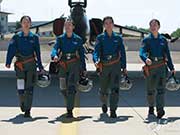 First batch of female combat pilots with duel degrees fly Flying Leopard
First batch of female combat pilots with duel degrees fly Flying Leopard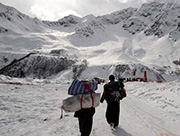 China’s ten most beautiful hiking trails
China’s ten most beautiful hiking trails Chinese and Japanese Youth Embrace in Tokyo
Chinese and Japanese Youth Embrace in Tokyo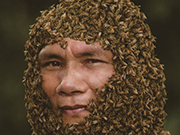 Legendary life of a bee-keeping master in Hainan
Legendary life of a bee-keeping master in Hainan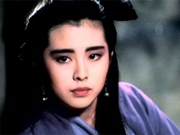 Evolution of Chinese beauties in a century
Evolution of Chinese beauties in a century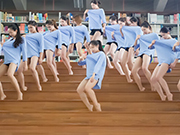 Creative graduation caps of ‘vigorous elves’
Creative graduation caps of ‘vigorous elves’ Catalan performers build human towers in Hangzhou
Catalan performers build human towers in Hangzhou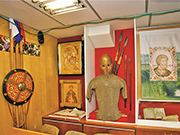 Typhoon class strategic Submarine in photos
Typhoon class strategic Submarine in photos